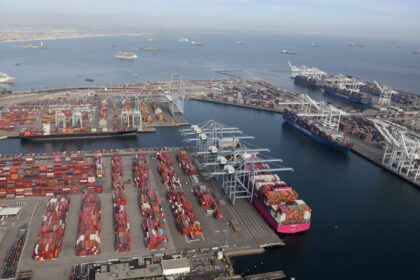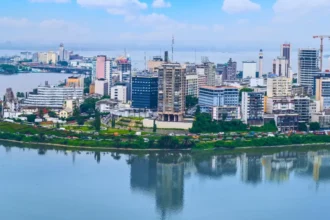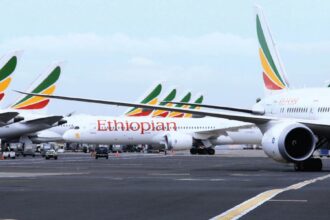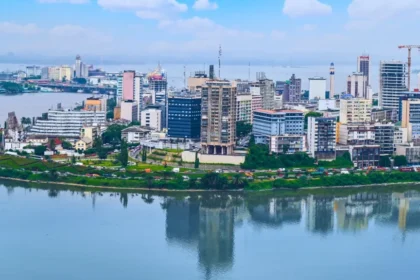At a Glance
- South Africa tops Africa with 573 airports, driven by tourism, mining, and business travel.
- Kenya’s 368 airports link exports, safari tourism, and budget airlines strengthening regional air networks.
- DRC’s 273 airports sustain mineral exports, connecting remote mining zones despite infrastructure challenges.
Africa’s aviation map is as varied as its geography. Some countries operate large international hubs that connect them to the world, while others rely on smaller strips that serve mining towns, safari lodges, or aid operations.
Together, these airports form the backbone of the continent’s air transport system, keeping people, goods, and ideas moving across borders.
The distribution reflects both scale and necessity. Sparsely populated nations such as Namibia and the Democratic Republic of Congo depend on hundreds of small airstrips, while larger economies like Egypt and Morocco focus on fewer but busier hubs.
Each network tells a story about the country’s economy, industries, and the role aviation plays in daily life.
From world-class hubs in Johannesburg and Cairo to dirt runways in Congo and South Sudan, Africa’s aviation story is about more than flight paths. It is about how nations stay connected, how industries function, and how people across a vast continent reach one another.
According to the CIA World Factbook, South Africa leads with more than 570 airports, far ahead of its peers. Kenya and the DRC follow, highlighting how geography and resources drive the need for air access.
But the numbers alone don’t capture the full picture. The International Air Transport Association projects that passenger traffic in Africa will more than double by the mid-2040s, making aviation one of the fastest-growing industries on the continent. The question for many countries is not only how many airports they have, but how well they can maintain and expand them.
Shore Africa has profiled 20 African countries with the most airports in 2025, their key hubs, and the forces shaping their aviation outlook:
1. South Africa — 573 airports
O.R. Tambo, Cape Town, and King Shaka anchor the network. Mining, tourism, and business travel keep demand steady. Infrastructure is strong, but airline consolidation and economic headwinds are challenges.
2. Kenya — 368 airports
Jomo Kenyatta International, Mombasa, and safari strips link agriculture exports and tourism. Cargo growth and budget carriers reinforce Kenya’s role as a hub.
3. Democratic Republic of Congo — 273 airports
Kinshasa-Ndjili and Lubumbashi connect to countless remote strips serving mining zones. Demand is sustained by mineral exports, though infrastructure gaps remain.
4. Namibia — 259 airports
Hosea Kutako International and lodge strips serve tourism and mining. Charter flights thrive, but a small population limits passenger volumes.
5. Tanzania — 206 airports
Julius Nyerere, Kilimanjaro, and Zanzibar link safari and coastal tourism. Visitor growth and gas projects support steady expansion.
6. Zimbabwe — 144 airports
Harare and Victoria Falls anchor the network. Investment is needed to keep up with rising demand.
7. Botswana — 122 airports
Gaborone and Okavango Delta strips serve diamond exports and high-end safari travel. Premium tourism helps sustain operations.
8. Zambia — 120 airports
Lusaka and Livingstone connect to mining and tourism. Ongoing projects expand capacity.
9. Angola — 107 airports
Luanda Quatro de Fevereiro dominates. Oil drives activity, but agriculture and gas could broaden demand.
10. Algeria — 95 airports
Algiers Houari Boumediene leads a strong domestic network. Energy dominates, while private carriers lag.
11. Madagascar — 93 airports
Ivato International and coastal strips make air access essential. Eco-tourism supports steady demand.
12. Mozambique — 92 airports
Maputo and provincial airfields link gas projects and beach resorts. Energy investments are expected to lift volumes.
13. South Sudan — 89 airports
Juba International and humanitarian strips dominate. Growth depends on peace and stability.
14. Libya — 75 airports
Tripoli and Benghazi connect to energy sites. Recovery hinges on political settlement.
15. Egypt — 73 airports
Cairo, Hurghada, and Sharm el-Sheikh carry heavy tourist traffic. Expansion keeps Egypt among Africa’s busiest markets.
16. Ethiopia — 58 airports
Addis Ababa Bole International drives traffic, with Ethiopian Airlines at the center. A new mega-airport is under way.
17. Nigeria — 50 airports
Lagos and Abuja dominate. Reforms and concessions aim to raise efficiency and capacity.
18. Morocco — 48 airports
Casablanca Mohammed V and Marrakech serve tourism and trade. Expansions are linked to the 2030 World Cup.
19. Sudan — 45 airports
Khartoum International and regional fields keep agriculture exports moving despite conflict.
20. Uganda — 39 airports
Entebbe International and safari strips connect oil projects and tourism.















